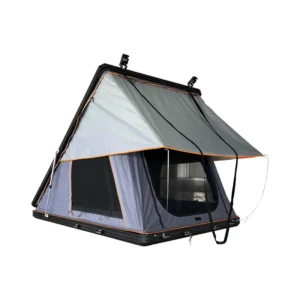What is a Rooftop Tent?
A rooftop tent is a portable, elevated camping shelter that attaches to the roof of a vehicle. Designed for outdoor enthusiasts, these tents offer a convenient and comfortable way to camp without the hassle of setting up a traditional ground tent. They are typically mounted on a roof rack system, allowing for easy setup and teardown. Whether you’re an avid camper, a road trip enthusiast, or an overlander, rooftop tents provide a unique way to experience nature.
Rooftop tents provide several advantages over traditional camping tents, such as protection from the elements and wildlife, enhanced comfort, and quicker setup time. They are an excellent solution for those who want to explore off-the-beaten-path locations with their vehicle while having a cozy place to sleep. These tents come in a variety of shapes, sizes, and materials, with each offering different benefits depending on the type of outdoor adventure.
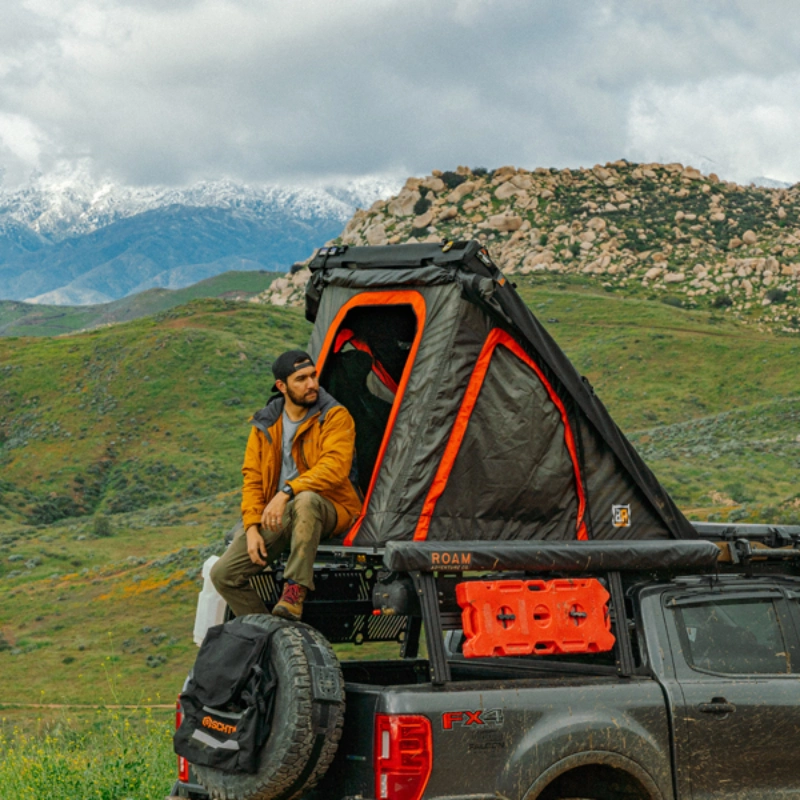
What are the Benefits of a Rooftop Tent?
- Ease of Setup: One of the biggest selling points of rooftop tents is the simplicity of setting them up. Unlike traditional tents, which require stakes, poles, and a flat, clear area to pitch, a rooftop tent can be set up in minutes. Simply open the tent, deploy the ladder, and you’re ready to sleep.
- Protection from Wildlife: Sleeping on the roof of your car offers better security and protection from ground-dwelling creatures, such as insects or animals. It gives you peace of mind when camping in areas known for wildlife activity.
- Comfort: Rooftop tents are equipped with thicker mattresses than traditional tents, providing more comfort for a good night’s sleep. Many also come with weatherproof covers to protect against rain and wind, keeping you dry and comfortable.
- Compact and Space-Saving: When not in use, a rooftop tent folds into a compact size that doesn’t take up space in your vehicle. This is especially useful if you’re traveling with a lot of gear and want to keep your car organized.
- Better Views: Being elevated off the ground allows you to enjoy panoramic views of your surroundings—perfect for scenic camping spots.
- Durability: These tents are typically made from durable materials that can withstand harsh weather conditions. Many are designed for all-year-round use, ensuring they perform well in a variety of climates.
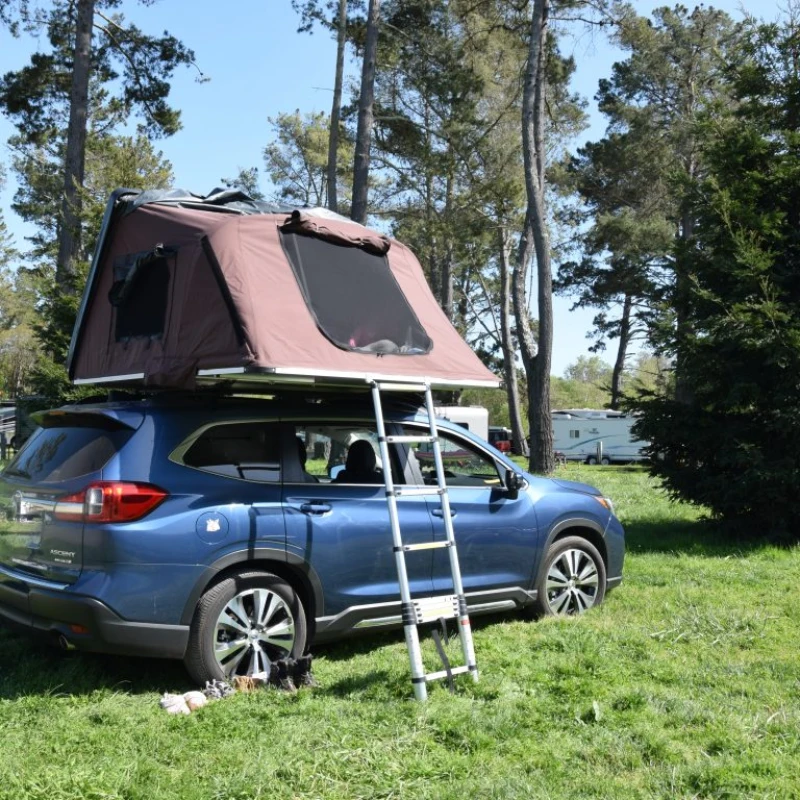
Types of Rooftop Tents
Rooftop tents come in several different styles, each designed to meet the specific needs of various types of travelers and outdoor enthusiasts. Below are some of the most popular types of rooftop tents, their features, and the ideal scenarios for their use.
1. Triangle Rooftop Tent
Description: The triangle rooftop tent is a more compact, angular design that typically folds into a triangular shape when closed. This type of tent is lighter and more streamlined, offering minimal wind resistance and a sleek profile.
Key Features:
- Lightweight and aerodynamic design
- Quick and easy to set up
- Compact when folded
- Typically accommodates 2 people
Ideal Usage: This type of rooftop tent is ideal for those who prioritize portability and minimal setup time. It’s especially suitable for smaller vehicles such as hatchbacks, crossovers, or compact SUVs that may not have the roof space for larger tents.
Ideal Vehicle: Small SUVs, crossovers, and hatchbacks are the best candidates for triangle rooftop tents due to their lighter weight and more compact design.
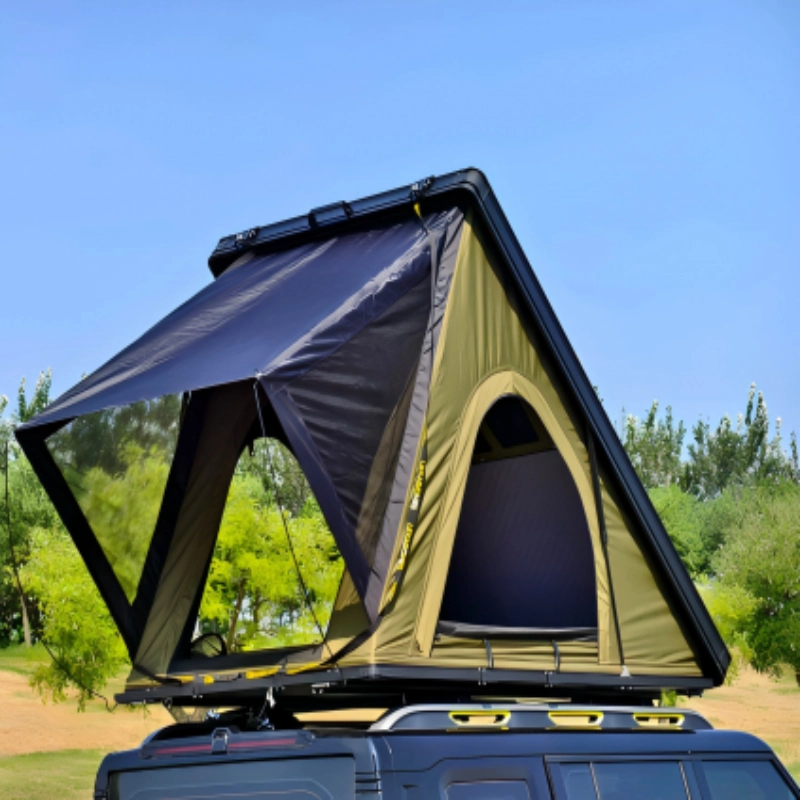
2. Soft-top Rooftop Tent
Description: Soft-top rooftop tents feature a soft fabric covering, often made of canvas or polyester, which allows for a more flexible and lightweight structure. They are highly popular for family camping and overlanding due to their comfort and affordability.
Key Features:
- Soft, durable fabric covering
- Spacious interior with good ventilation
- Can be more affordable than hard shell options
- Often includes additional features like awnings or side rooms
Ideal Usage: Soft-top tents are perfect for extended camping trips, as they offer more space and comfort. Their lightweight nature makes them a good choice for off-roading and overlanding.
Ideal Vehicle: These tents work well with mid-size to large SUVs, 4x4s, and trucks. They can easily be mounted on most vehicles with a strong roof rack system.
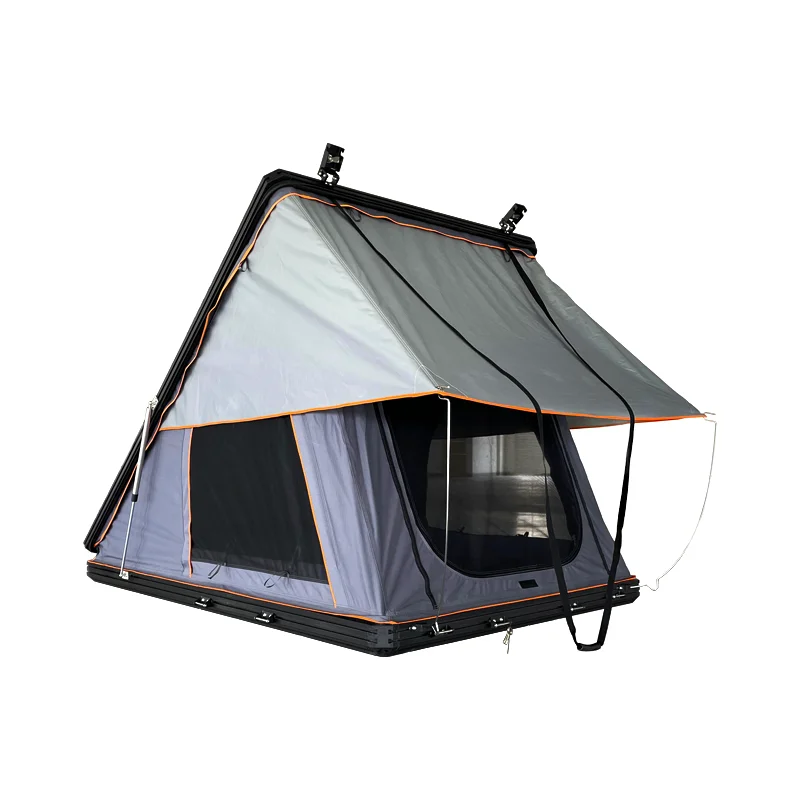
3. ABS Side Opening Rooftop Tent
Description: The ABS side-opening rooftop tent features a hard shell made from ABS plastic, which offers superior durability and insulation. The tent opens from the side, allowing for more flexible access and comfort.
Key Features:
- Durable ABS plastic shell
- Side-opening for easy access
- Better insulation, making it suitable for colder climates
- More spacious interior with a mattress included
Ideal Usage: The ABS side-opening rooftop tent is ideal for adventurers who want a hard-shell tent that offers durability and better insulation. It’s perfect for year-round camping, even in colder temperatures.
Ideal Vehicle: This type of tent is best for larger vehicles such as SUVs, 4x4s, and trucks that can handle the extra weight and need for a sturdy roof rack.
4. Aluminum Side-Opening Roof Tent
Description: Aluminum side-opening rooftop tents are similar to ABS tents but feature an aluminum shell, which is both lightweight and incredibly durable. The aluminum design makes these tents ideal for rugged terrain and long-term use.
Key Features:
- Lightweight but strong aluminum shell
- Quick deployment and side-opening access
- Excellent weather resistance
- Often includes additional features like built-in lighting or electrical ports
Ideal Usage: This type of tent is designed for overlanding and adventure travel, offering the best of both worlds: lightweight design with the strength and protection needed for extreme environments.
Ideal Vehicle: SUVs, trucks, and larger off-road vehicles are perfect for mounting aluminum side-opening rooftop tents, as they are designed to withstand more substantial weight and rough terrain.

5. Shower Rooftop Tent
Description: The shower rooftop tent combines the practicality of a rooftop tent with an integrated shower system. It includes a waterproof area designed for taking showers and changing clothes, making it an essential piece of equipment for long-term camping and overlanding.
Key Features:
- Waterproof materials for showering
- Spacious design with ventilation
- Privacy for changing clothes and bathing
- Some models include hot water systems
Ideal Usage: A shower rooftop tent is ideal for people on extended overlanding or camping trips, where access to clean water and privacy for personal care is a necessity.
Ideal Vehicle: These tents are best for larger vehicles with plenty of roof space, such as SUVs, trucks, or vans. They can be heavier and require more robust roof racks to carry the additional weight.
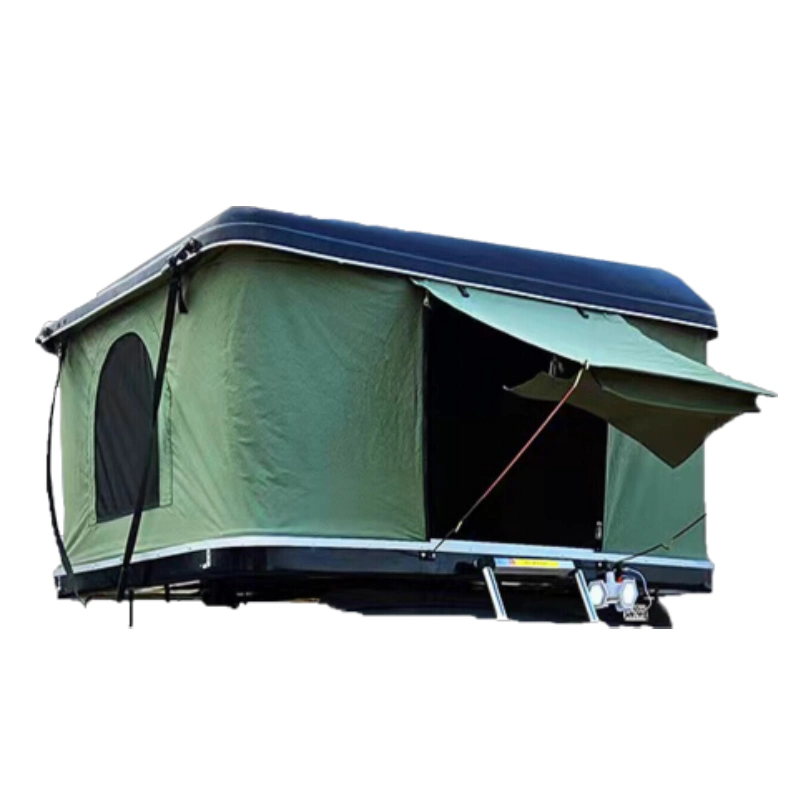
6.Fiberglass Shell Roof Tent
Description: Fiberglass shell roof tents are constructed with a rigid, durable fiberglass exterior that provides excellent protection against the elements. This design ensures a robust and weather-resistant shelter, making it an ideal choice for all-weather camping. The solid structure also allows for quick and easy setup, typically requiring only a few minutes to unfold and lock into place.
Key Features:
- Rigid, weather-resistant fiberglass shell: Offers superior protection against rain, wind, and UV damage.
- Quick and easy setup: Typically unfolds and locks into place in just a few minutes, making it convenient for spontaneous camping trips.
- Spacious and comfortable interior: Provides ample headroom and sleeping space, often featuring built-in mattresses for added comfort.
- Excellent insulation: The fiberglass material helps maintain a consistent temperature inside the tent, keeping you warm in cold weather and cool in hot conditions.
- Durable and long-lasting: Built to withstand harsh environments and repeated use, ensuring a long lifespan.
- Integrated features: Often comes with additional features such as awnings, storage compartments, and mosquito nets for added convenience and protection.
Ideal Usage: Fiberglass shell roof tents are perfect for adventurers who prioritize durability and ease of use. They are suitable for a wide range of camping scenarios, from weekend getaways to extended expeditions in challenging terrains. The quick setup and robust construction make them ideal for those who want a reliable and comfortable shelter without the hassle of traditional tent pitching.
Ideal Vehicle: These tents are best suited for larger vehicles such as full-size SUVs, 4x4s, and trucks. They require a sturdy roof rack system to ensure secure mounting and safe transportation. While they are heavier than soft-top tents, the added weight is offset by their superior durability and ease of use.

How to Install a Rooftop Tent
Installing a rooftop tent is generally straightforward, but there are a few steps to keep in mind. Here’s a quick guide on how to install a rooftop tent:
- Choose the Right Roof Rack: Make sure your vehicle has a suitable roof rack that can support the weight of the tent. Check the manufacturer’s weight limits and compatibility before purchasing.
- Lift the Tent: Most rooftop tents are heavy, so you may need help to lift it onto the roof rack. Many come with mounting hardware that allows you to secure them tightly to the roof bars.
- Position the Tent: Once the tent is on the roof rack, position it so that it is centered and balanced. Double-check the alignment and ensure the tent is securely positioned.
- Attach the Tent: Use the provided straps or bolts to securely attach the tent to the roof rack. Tighten all fastenings to ensure the tent is firmly in place.
- Adjust for Access: Some tents may require a ladder for access. Make sure the ladder is securely attached and positioned for safe use.
- Check for Stability: After installation, gently test the stability of the tent by applying pressure and checking for any movement. Make sure it is solid and safe for use.
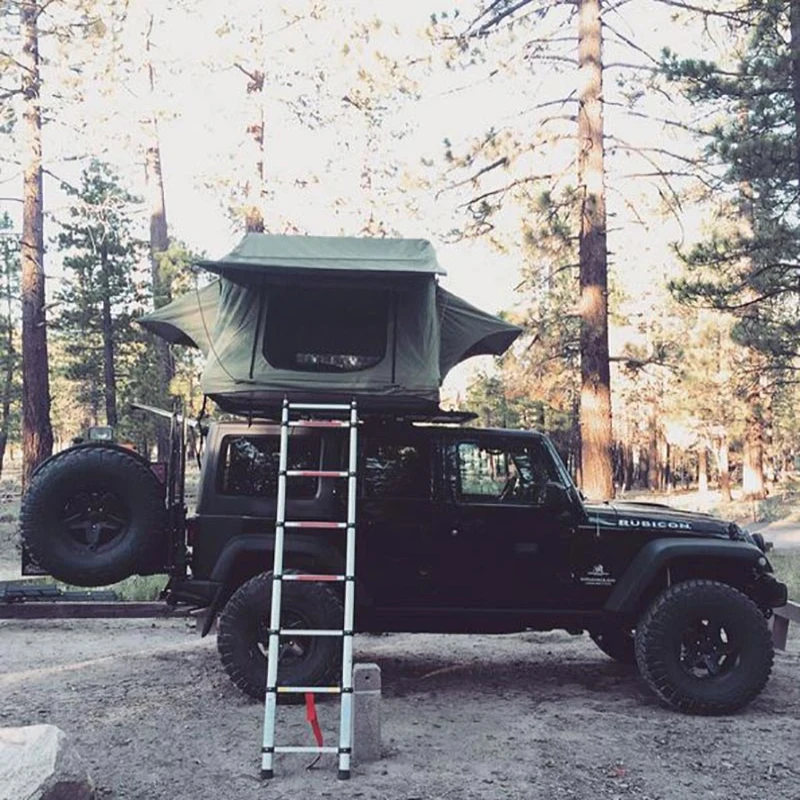
Related FAQS
How much weight can my vehicle’s roof rack support?
Roof rack weight limits vary by manufacturer and model, but most can support between 150-200 lbs. Always check the specifications of your vehicle and the rooftop tent before installation.
Can I leave the rooftop tent on my vehicle year-round?
Yes, many rooftop tents are designed for year-round use. However, it’s important to ensure the tent is properly maintained and that it is securely attached to the roof rack.
Are rooftop tents weatherproof?
Most rooftop tents are designed to withstand various weather conditions, including rain, snow, and wind. Always check the material specifications to ensure it suits your intended climate.
How do I maintain a rooftop tent?
Regularly clean the tent fabric and check for any wear or damage. Ensure that zippers and seals are in good condition to prevent leaks.
Can I use a rooftop tent with a sedan?
Rooftop tents are generally best suited for SUVs, trucks, and 4x4s due to their increased roof strength and space. However, some smaller rooftop tents are compatible with sedans with the right roof rack.


